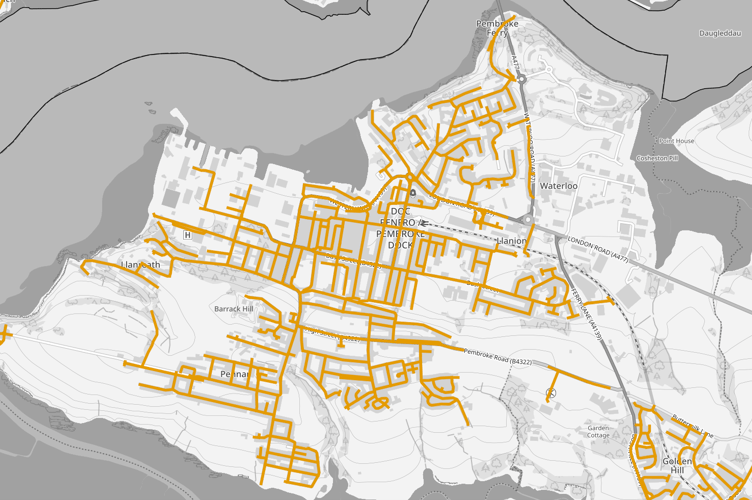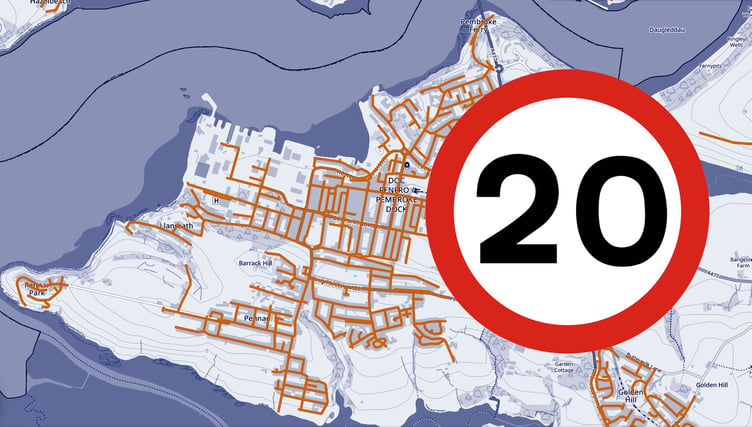When almost two thirds of people said they were in support of a lower speed limit where they live, and 62 per cent agreed they ‘wished everyone would slow down a bit on the roads’, did they know they were giving the Welsh Government carte blanche to impose a ‘blanket’ 20mph speed limit?
These responses were to a public opinion survey, published last September, which also showed 55 per cent of respondents agreeing that ‘streets would be a lot nicer for pedestrians with a 20mph speed limit’.
Added to this was the stated belief of Public Health Wales that lowering the default speed limit to 20mph could have substantial health benefits, reducing the risk of collisions and benefiting people’s physical and mental well-being.
So it was that two-and-a-half weeks ago, on September 17, 20mph was established in Wales as the new normal, replacing 30mph as the default maximum speed for built-up areas, with local councils able to decide on any roads that should remain at 30mph.
According to the Welsh Government, the high cost of introducing the change - £32m is the official figure - would be offset even in the first year by reducing collisions by 40 per cent, saving six to ten lives, and avoiding between 1,200 and 1,900 people being injured: an estimated saving of £92m. They further assert that driving more slowly produces less noise, reduces fuel consumption and reduces emissions.
You would think that public opinion would be more in favour, or at least tolerant, of this well-intentioned move to make Wales and safer and greener place, yet the evidence shows a high level of dissatisfaction. There are now around 450,000 signatures on a growing petition, ‘We want the Welsh Government to rescind and remove the disastrous 20mph law’, while social media is awash with satirical cartoons and rhymes about First Minister Mark Drakeford, showing him driving a snail or lambasting: “He wants you to walk everywhere, from St Clears to Aberdare / It may take several days of course, but he doesn’t really care!”
Accepting that some people just want to criticise the government, and some may simply wish to travel faster for their own convenience, there are two issues at the heart of the anger expressed by locals. Firstly, they don’t believe the rhetoric about safety and the environment - and secondly, they are experiencing a great deal of confusion about where the new limits apply. This is especially true of Pembroke Dock, where speed signs are few and far between.
One post on the Pembroke Dock and Pembroke Citizens’ Forum sums it up: “Can anyone explain speed limits in Pembroke Dock? Top of Essex Road sign says 30mph but I thought anywhere in built up areas with street lights was 20mph. Also a shortage of 20mph signs around town. I have not seen any!”
The comments that followed only served to confirm the confusion as contradictory opinions were stated.
When asked about the speed limit confusion in the town, a spokesman for Pembrokeshire County Council said: “Council teams are currently working their way around the County to ensure all signs are correct and those that are no longer required are removed.
“This was always going to be a significant task and it has been further impacted by having to revisit and repair or replace signs that have been deliberately damaged or defaced. This also has a cost implication for the Council.
“The public’s patience while this work is completed is appreciated.
“The definitive map of roads affected by changes is available at datamap.gov.wales .”
The forum contributor who quipped that “The County Council map would be only slightly more confusing if it was written in ancient Babylonian” was probably phased (understandably) by the map’s deceptive title ‘Roads affected by changes to the speed limit on restricted roads’. Not very helpful when its initial view shows those stretches of road that have been exempted from the blanket imposition. The map can then be customised by making ‘filters’ visible or invisible.
Hopefully the map printed here - which shows all roads that should now be driven at 20mph or less - will help clarify that the new speed limit applies to the greater part of the town.

What’s really needed is better signage, ideally including some digital ‘feedback’ signs, as the last sign visible to motorists entering Pembroke Dock by London Road says 30, and it is clear from the speed of progress around the town that it is taken to apply to every street. County Councillor Joshua Beynon commented: “I am in favour of the scheme as I think it’s great to get people walking and cycling more whilst also reducing road accidents. I would say to anyone concerned that there isn’t an exception or that signs are missing to contact their local county councillor who can help to change this. The 20mph legislation essentially moved all 30mph zones into 20mph zones but local councils can change this and have the powers to revert back if appropriate.”
This is not true of Trunk Roads, however. For example, to combat the punitive stretch of 20mph at Johnston - a major route to Haverfordwest - would require people to make representations to South Wales Trunk Road Agent (SWTRA).
Whether the new limit will really make for safer, greener driving is a bone of contention, with science-based and anecdotal evidence on both sides. A Pembroke Dock grandmother who has been campaigning for a zebra crossing on London Road, near Gaswork Lane, has pointed out that the slower traffic makes for fewer gaps, making it harder to cross safely.
As well as being home to much lorry transport, the town frequently complains of ‘boy racer’ antisocial driving. “I think the issue here, as in so many streets is that drivers whizz round like they are at Brands Hatch… This 20mph lark won’t work,” said one resident - in other words, the most dangerous drivers pay no heed to speed limits.
According to the AA, the stopping distance for 20mph is three car lengths (12m or 40 feet), whereas the stopping distance for 30mph is nearly doubled to six car lengths (23m or 75 feet). This is one of the biggest arguments for the slower speed being safer. On the other hand, the Alliance of British Drivers has stated that the slower people go, the more likely they are to become distracted. “I have found it so much easier to eat a McFlurry at 20mph,” jokes one Pembrokeshire driver.
Many people think that driving at 20mph lowers fuel economy, but Peter De Nayer, a former AA fuel efficiency expert, has said there is a huge misconception that the most fuel-efficient speed is around 55mph, because it’s used for open-road driving. A study shows that the slower you go with the vehicle running smoothly, the less fuel you will use. But a dent in 20’s green credentials comes from Professor Stuart Cole, who revealed that buses are not designed to travel at 20mph.
But it’s clear something needs to be done about road safety. The latest Reported Road Casualties Report “paints a grim picture of road safety in Great Britain, with 29,742 killed or seriously injured on the roads every year,” says RoSPA – “the equivalent of 1,000 coaches full of people, or 81 people per day, every day of the year.”





Comments
This article has no comments yet. Be the first to leave a comment.